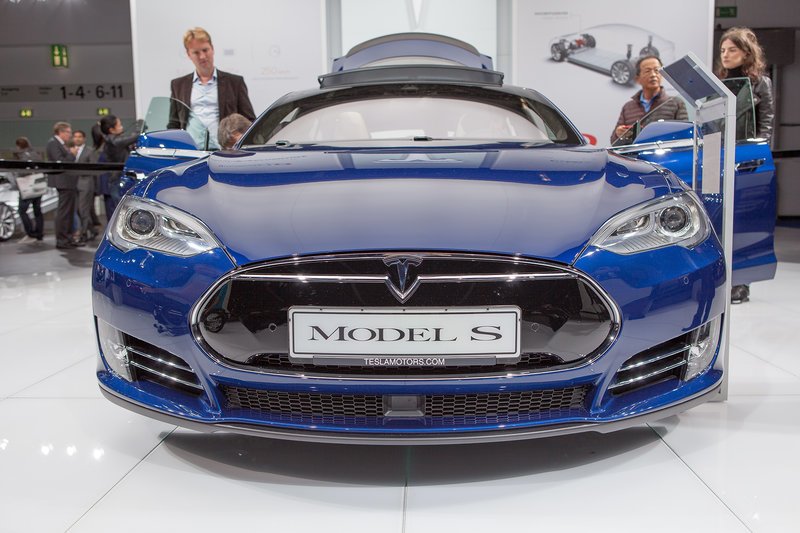In numerous columns, and years before that, I have been beating one drum. The stock market is forward looking. It attempts to figure out which firms will control the future, Amazon for instance, and which companies have dropped the ball, IBM for instance. There are numerous examples of this dichotomy, but one I have been harping on in numerous columns is the relation between Tesla and the auto industry. It is time for a retrospective.
Q1 2020 hedge fund letters, conferences and more
Checklist For A Successful Electric Car
Back in December of 2019, I wrote, A successful electric car must check four boxes: design (modern tech look), price, range and availability in quantity. Only the Tesla Model 3 (and potentially the forthcoming Model Y) checks all four boxes. The Bolt is boring. The Leaf is ugly. The Polestar is not available in quantity. The i3 is getting long in the tooth and still lacks the range. The Taycan is way too expensive.
The Jaguar and the Audi are large expensive SUVs comparable to Tesla's Model X. There are other competitors like Fisker, but they produce a few high-priced exotics. Is it any surprise that in the United States the Tesla Model 3 outsells all other electric cars combined?
And now we learn that Mercedes has withdrawn the EQC 400 luxury SUV from the U.S. market for 2020. How does Mercedes plan to gain credibility with U.S. car buyers? What is particularly surprising is that all of this is true more than seven years after the Model S was introduced on June 22, 2012. The competitors keep saying the electric wave is about to break, but like fusion power, it always seems to be in the future.
Later, in an article on Tesla and Space X, I returned to this theme saying, Unless competing auto makers respond in kind, it will becoming increasing difficult for them to compete with Tesla. Somehow the competitors have to convince both investors and future car buyers that they have the talent and creativity to compete with Musk, even if they are not putting astronauts into orbit. To date, they have been markedly deficient in that respect.
The failure incumbent auto makers to convince the market that they can innovate in the electric market would be so serious, if the access to cheap equity capital were not such a huge factor, but it is. Auto manufacturing is a capital-intensive business and the ability to raise equity at sky high valuations is a huge competitive advantage. In a past article on this point I wrote, The subsidized access to equity capital allows Tesla to finance capital expenditures, such as the opening of new factories, that other auto manufacturers cannot justify.
As a result, Tesla gains a key competitive advantage in the transition to electric vehicles by building facilities and conducting research and development. The subsidy also allows Tesla to improve its capital structure by reducing leverage, both directly and via the conversion of convertible debt to equity at high equity prices. As a result of the foregoing, there is a positive feedback from the stock price to the fundamental value of the company that benefits Tesla at the expense of its competitors.
One of Musk’s one most clever steps has been to get investors to think of Tesla not as a car company, but as a tech company that is a major innovator in energy and transportation. Musk effectively portrays competitors like Ford and GM as lumbering dinosaurs caught in a prior fossil fuel era. In the article, Is Tesla a tech company, I wrote, No one considers GM and Ford to be tech companies so how does Tesla earn the tech label when 90% of its revenue comes from selling cars?
One explanation Tesla is a leader in electric vehicle and battery technology, although it is far from clear exactly how its technology is better given that most of its parts, including many of its batteries, are manufactured by third parties. . Perhaps the biggest factor is “technology perception” that Elon Musk has been able to create from a continuing series of splashy presentations combined with the aggressive use of social media. Musk himself, with his tech background, unpredictable lifestyle, and constant bluster, is a key part of the technology perception.
He portrays Tesla cars as the new iPhone and competing auto manufacturers as sellers of Blackberrys. As I noted in a previous post, competing automakers have played into this story by failing to produce innovative electric cars in any volume and failing to use social media in effectively marketing those cars that are produced.
Tesla: The Most Valuable Auto Maker
So here we are in July 2020 and Tesla is the most valuable auto maker in the world and there are no compelling electric alternatives. Toyota is still talking about hydrogen. Volkswagen has fumbled the introduction of its new ID.3. Porsche has beautiful cars but in tiny numbers. The Ford Mach E has been delayed. The GM Bolt has disappeared from the conversation, and new electric vehicles remain promises. BMW and Mercedes are both losing their sheen because they have yet to produce any reasonable numbers of exciting electric cars. Needless to say, I feel like I have been whistling in the wind.
To conclude, in that original article back in December I ended by saying, If the competitors do not start making interesting, reasonably priced, electric cars in scale, they may face the same fate of retailers who did not respond quickly to Amazon. If that happens, Tesla’s record market cap may not represent overvaluation at all. Well at the current sky-high price of $1,200 I still conclude that Tesla is significantly overvalued. But given the disarray of the competition, I may be wrong.






